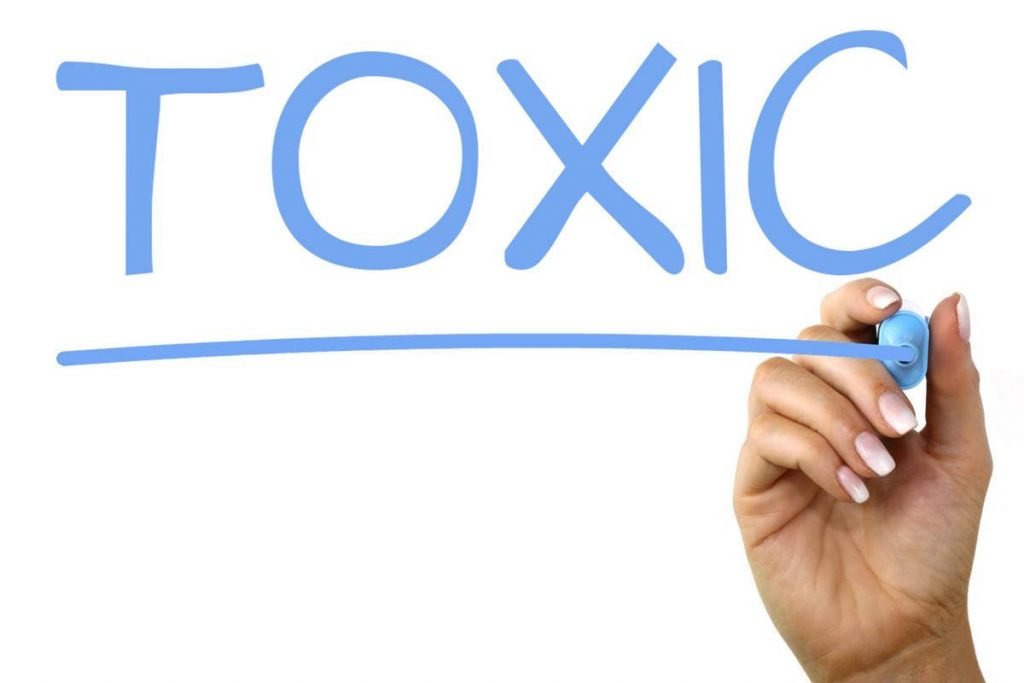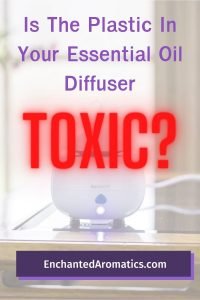General
Is the Plastic in Essential Oil Diffusers Toxic?
By Mark Piatt
Updated on February 17, 2021
Is the Plastic in Essential Oil Diffusers Toxic?
If you purchase a diffuser made of medical-grade plastic, then your diffuser should be toxic-free. But, since plastics can differ between manufacturers, it is not a guarantee that your diffuser is not leaching toxic chemicals into the water and into the air you breathe.
Since most of my essential oil diffusers are plastic, I was wondering if these plastic diffusers could be toxic in some way.
Like many of you, I use an essential oil diffuser as a natural way to make my space smell good and occasionally for the therapeutic qualities of essential oils. And as many of you are aware, many plastic products are toxic. So, I got to wondering if my beloved essential oil diffusers could be harming me in some way.
DISCLAIMER:
Information provided in this description is for educational purposes only. For possible treatments of physical or mental diseases, please seek a trained and licensed health professional. Enchanted Aromatics is not responsible for any adverse side effects resulting from the use of any suggestions, products, preparations, or procedures mentioned or from following historical uses of essential oils.
Are essential oil diffusers safe?
Just about any essential oil diffuser you purchase from a store or website based in the United States will be made from medical-grade plastic. Yes, they are safe. But when purchasing diffusers from outside the United States, some manufacturers may not be using BPA-free plastic in order to save on costs.
But you may be asking, what exactly is medical-grade plastic?
A medical-grade plastic is a plastic that is temperature, chemical, and corrosive resistant. This also means that chemicals “should not” be leaching out into your water and oils. But plastics are made up of many chemicals – many of which have not been studied as to how they affect human health.
If you purchase one of those cheap diffusers from an overseas seller, you do not know if your diffuser is made from a medical-grade plastic since they do now fall under the same laws as those who sell diffusers within the United States.
I will be looking at the toxicity of our diffusers and I will discuss what you want to look for to reduce any possible exposure to toxic chemicals.
A brief overview of plastic classifications
The following table shows the 7 main classifications of plastic starting with their recycling number.
| # | Polymer Name | Found in What? |
|---|---|---|
| 1 | Polyethylene Terephthalate (PETE or PET) | Bottles, all single-serving and 2-liter bottles, jars, containers, cosmetic containers, packaging applications in the food industry. |
| 2 | High Density Polyethylene (HDPE) | Containers for milk, motor oil, shampoos, detergents, bleach, and some diffusers. |
| 3 | Polyvinyl Chloride (PVC) | Building and construction applications, electronics, automobiles, piping, blood bags, tubing, wire insulation. |
| 4 | Low Density Polyethylene (LDPE) | Non-food containers, computer components, molded laboratory equipment, plastic bags, product packaging. |
| 5 | Polypropylene (PP) | Packaging, automotive industry, medical tools, implants, gears, plates, trays, cups, containers, toys, and household products such as diffusers. |
| 6 | Polystyrene (PS) | Disposable plastic cutlery and dinnerware, jewel cases, smoke detector housings, plastic models, kits, license plate frames, etc. |
| 7 | Other plastics, including acrylic, acrylonitrile butadiene styrene, fiberglass, nylon, polycarbonate, and polylactic acid (OTHER) | Everything else. |
Research is always being done to make plastics more sustainable and safer for the planet. Some new up-and-coming biodegradable plastics are showing a great deal of promise. Because of these advances, the 7 main classifications could change in the future.
What type of plastic is used in medical-grade essential oil diffusers?
Diffusers can be made from any plastic. But to be safe, you only want to purchase a diffuser made from medical-grade plastic such as these diffusers by Aromasource, Sparoom, or Greenair. 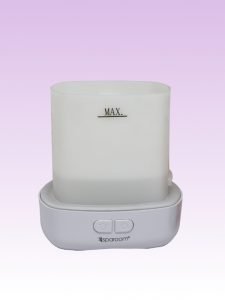 This typically only refers to the part that holds the water. The outer shell could be made from other types of plastics.
This typically only refers to the part that holds the water. The outer shell could be made from other types of plastics.
When talking about medical-grade plastics, we are mainly interested in type 2 High-Density Polyethylene (HDPE) and type 5 Polypropylene (PP).
High-Density Polyethylene (HDPE)
HDPE has high durability and resistance to damage compared to other plastics and can withstand higher temperatures for longer periods.
Because this plastic is considered “food safe” it can be found in various containers for food products such as milk, drinking bottles, etc.
HDPE can be dangerous during its manufacturing process, but once cured, it is a food-safe plastic.
Although considered safe in its final form, some studies have shown HDPE can leach estrogenic chemicals that can be dangerous to fetuses and juveniles.
Generally, essential oils will not affect HDPE, so you will find this plastic used in essential oil bottle caps, orifices, and some diffusers.
But with that said, even though HDPE is not affected by essential oils, for long-term storage, you should only store your essential oils in a glass container.
Polypropylene (PP)
Of all the plastics, polypropylene is considered one of the safest plastics. For this reason, it has been FDA approved for food contact, surgical devices, and implants.
The EPA (Environmental Protection Agency) considers polypropylene to be a safer choice compared to other plastics. As of today, the EPA does not believe that polypropylene can cause cancer in humans.
But researchers have found the chemical makeup of polypropylene can differ depending on who manufactured the plastic. Some of this research has found there can be various levels of toxicity found among the various polypropylene manufacturers. If you are interested, here is an external link to one such study. But despite these findings, both the FDA and EPA still consider polypropylene to be safe.
When looking at diffusers that say they are made from medical-grade plastic, polypropylene is almost always what they are referring to.
What chemicals from plastic are harmful to us?
According to environmental toxicologist Jane Muncke, Ph, D., every plastic contains unknown chemicals and many of these chemicals may be unsafe. More than 1000 chemicals have been detected in plastics and out of these, over 80% have not been studied enough to understand the health risks.
Every plastic has the potential to leach out harmful chemicals. Some plastics leach out more chemicals compared to other types of plastics.
Every plastic that has been studied has shown various forms of toxicity under various circumstances. For more information, see the following article published by Consumer Reports.
Harmful chemicals found in plastic can be divided into 3 categories:
- Ingredients
- Byproducts of manufacturing
- Absorption from the environment
A short list of some of the more serious toxic chemicals include:
- Heavy metals
- Pesticides
- Polycyclic aromatic hydrocarbons (PAHs)
- Polychlorinated biphenyls (PCBs)
Many of the toxic chemicals found in plastic are known as POPs (Persistent Organic Pollutants). Some of these toxic chemicals are carcinogenic or neurotoxic.
Many of these chemicals are known as endocrine disrupters. They have been linked to all sorts of health problems in humans including:
- Cancer
- Reduced fertility
- Reproduction organs
Following is some additional detail on some of the chemicals that have serious health risks associated with them.
BPA (Bisphenol A)
BPA is one of the worst chemicals used to produce plastic. Unfortunately, this chemical is one of the most widely used chemicals used in producing plastic.
BPA is known as an endocrine disrupter. This chemical can affect fetuses in negative ways such as intrauterine growth restrictions (growth rates), reduced birth weight, and reduced birth length. As a result of this, plastics with BPA were banned in baby bottles in 2014.
BPA can also cause harm to the brain and behaviors of young children. BPA can harm prostates in young boys.
BPA is known to mimic estrogen.
Polypropylene, the plastic used in many diffuser tanks, does not (or should not) contain BPA.
Unfortunately, these plastics are still used in the food industry. They can be found lining canned foods, beverage bottles, and food containers. Repeated heating and washing of these materials can cause an increase in the amount of BPA getting leached out. The BPA is then carried into our groundwater, into the oceans, and then fish ingest the BPA, which we then eat.
In a study conducted by the CDC, they found that 93 percent of the urine samples they studied contained varying degrees of BPA.
BPA can enter the body through food and water ingestion, air, and dust. If you order a cheap diffuser that is imported from another country, they may have used a cheaper plastic such as polycarbonate, and you could be getting exposed to BPA.
BPS bisphenol S
A close cousin to BPA, this is sometimes used as a substitute for BPA. Unfortunately, it has been found to have many of the same health risks as BPA.
In addition, BPS can impair blood functions and in tests with rats, it can induce cardiovascular risks.
Besides plastic, BPS can also be found in some thermal paper used for shipping labels and cash receipts.
Antimony
This toxic metalloid can cause vomiting, diarrhea, and stomach ulcers. Can be found in #1 PET bottles, packaging, and food containers.
Benzine
This chemical can depress the immune system and is a known carcinogen. Can be found in #1 PET, #3 PVC, #4 LDPE, and #5 PP.
Dioxane
Another carcinogen, dioxane can also cause damage to the immune system, hormonal system, and fetal development. Found in #3 PVC, #6 PS.
Phthalates
This chemical has been linked to asthma, allergies, cognitive and behavioral problems, and reproductive problems. Found in #1 PET and #3 PVC.
Styrene and Vinyl Chloride
Styrene and vinyl chloride monomers, which are used extensively in the production of plastic, are carcinogenic and mutagenic.
These chemicals can be found in plastics used for plastic packaging, disposable cups, containers, insulation, and many other products.
These products can also negatively affect the brain and lungs.
Can the plastic in my essential oil diffuser be leaching toxic chemicals into my oils?
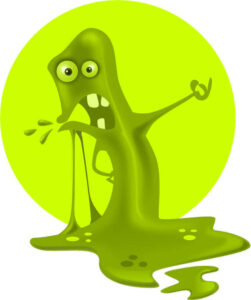 Since studies have shown that all plastics can leach toxic chemicals, the answer is yes. But according to the EPA and FDA, medical-grade plastics do not leach chemicals or amounts that are considered toxic to humans.
Since studies have shown that all plastics can leach toxic chemicals, the answer is yes. But according to the EPA and FDA, medical-grade plastics do not leach chemicals or amounts that are considered toxic to humans.
But since not all the plastics have been thoroughly tested, there is always the possibility that even the best plastic diffusers are leaching toxic chemicals.
Many chemicals found in essential oils are considered caustic, so these caustic chemicals can corrode the plastic in diffusers over time.
It is for this reason that it is highly recommended that you store your essential oils in glass bottles, not plastic bottles.
Do not purchase essential oils from a company that stores their essential oils in plastic bottles.
If you go to some of the big box stores and look in the essential oil diffuser section, you will find plastic bottles of fragrances. Do not get these confused with essential oils. These fragrances have been created in the lab and do not have any therapeutic properties.
After doing some extensive research, I can not find any cases in which some type of toxicological event has been tied to an essential oil diffuser. Based on that, I would think the risk is minimal, but that is just my opinion.
How to choose a non-toxic plastic essential oil diffuser
- As the first line of defense, always purchase a diffuser from a seller within the United States.
- Make sure that somewhere in the description for the diffuser, it says the diffuser is made from medical-grade plastic, polypropylene, or high-density polyethylene. If the company does not provide this information, do not purchase the diffuser.
- Avoid purchasing those cheap $12 diffusers found on various sites. Most of these diffusers are imported into the United States by fly-by-night companies with no quality control and no independent testing of their products or from companies that have poor safety records.
Related Questions
Can essential oils break down the plastic in diffusers?
I have seen this claim made on many websites. I have researched the subject and can not find a single study that shows essential oils can break down the plastic in diffusers that use medical-grade plastic. There have been studies that show some essential oils can break down non-medical grade plastic.
We know that many essential oils can be caustic, especially citrus-based essential oils. The lemon essential oil can break down #6 Polystyrene. So, to be safe, I would go by the assumption that these oils can break down plastics in non-medical grade diffusers. And for this reason, do not purchase a diffuser if it does not indicate it is made from medical-grade plastic. Also, never store your essential oils in plastic containers.
There are diffuser manufacturers who will void your warranty if you use citrus-based essential oils in their diffusers.
What color is polypropylene?
The natural color of polypropylene is semi-translucent white. Most diffuser tubs that hold the water are either this color or white. Dyes can be added to the plastic and can essentially be any color such as the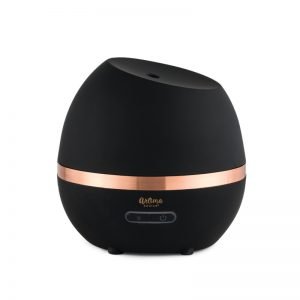
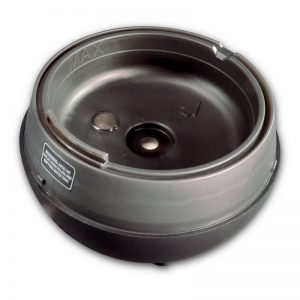 Aromasource DebonAir diffuser which has been dyed black. Even though the internal diffuser is black, this diffuser is still made from medical-grade polypropylene plastic and is considered non-toxic.
Aromasource DebonAir diffuser which has been dyed black. Even though the internal diffuser is black, this diffuser is still made from medical-grade polypropylene plastic and is considered non-toxic.
What alternatives are there instead of plastic diffusers?
If you do have concerns over using a plastic diffuser, there are alternatives. If you wish to use an ultrasonic diffuser, then a diffuser with a glass reservoir would be your best choice such as the following.
Levoair Glass Essential Oil Diffuser
- Glass reservoir & wood base
- 4 timer settings
- 10 hour running time
Lecdura Glass Essential Oil Diffuser
- Glass reservoir & wood base
- 100% plastic free
- 5 hour running time
Or, instead of using an ultrasonic diffuser, you could use a nebulizing diffuser that either uses a glass reservoir or uses a glass bottle such as the following.
ArOmis Professional Grade Nebulizer
- Glass reservoir
- Waterless
- 10 minutes on / 10 minutes off
Scentcares Waterless Essential Oil Diffuser
- Diffuse directly from the bottle
- 3 levels of intensity
- 50 hours per charge
Some other alternatives include Reed diffusers, fan diffusers, natural stone diffusers, or ceramic diffusers.
Are some plastic diffusers “specifically” made to withstand the potency of essential oils?
No. If a company makes that claim, it is purely a marketing claim with no scientific basis, or its claim is misworded. Plastics that are used specifically with essential oils are usually high-density polyethylene or polypropylene but they are not made specifically for essential oils. If any company is using a medical-grade plastic such as polypropylene or high-density polyethylene, their diffuser is just as safe as another company’s diffuser made of medical-grade plastic. If you want a diffuser that can resist all essential oils, then the only type of diffuser that can do this is a glass-based diffuser.
Conclusion
Are essential oil diffusers safe? As of right now, according to the EPA, if you are using an essential oil diffuser that uses medical-grade plastic for its reservoir or a glass reservoir, then diffusers are safe.
But all plastics leach chemicals. As a result, however minimal, some plastic essential oil diffusers may have some toxicological risks associated with them.
If you wish to use a plastic diffuser, you can reduce those risks by using a diffuser made of medical-grade plastic. Pretty much all essential oil diffusers sold in the United States will fall under this category.
Better yet, to eliminate those toxicological risks, use a diffuser made of glass.
All our diffusers are BPA-free. All our ultrasonic essential oil diffusers use either medical-grade plastic or glass reservoirs. CLICK HERE to check out our constantly changing selection.

